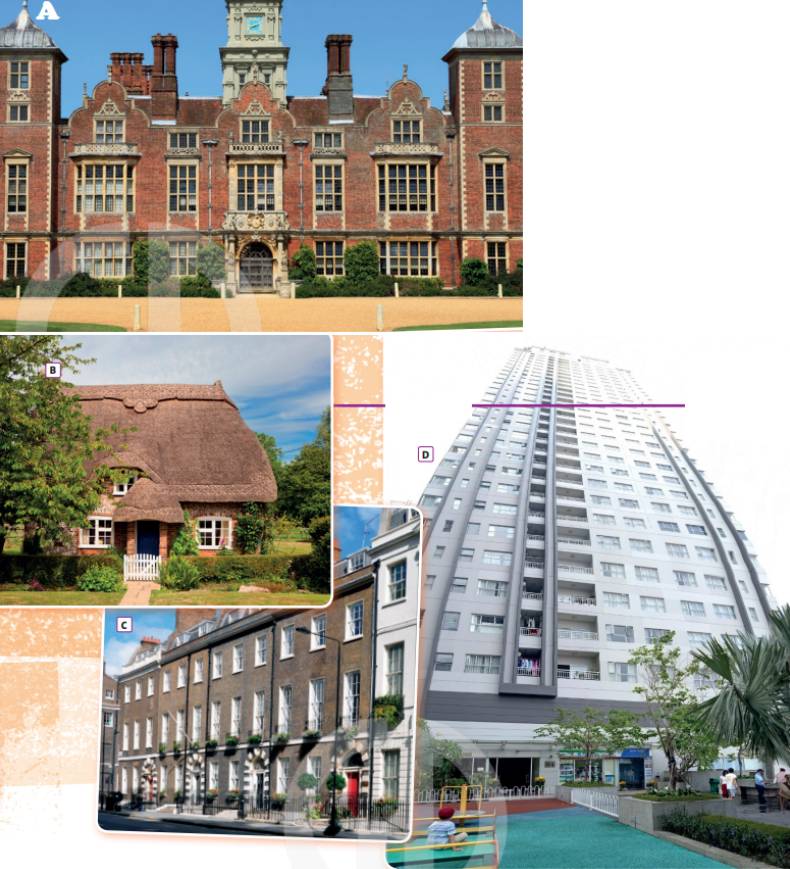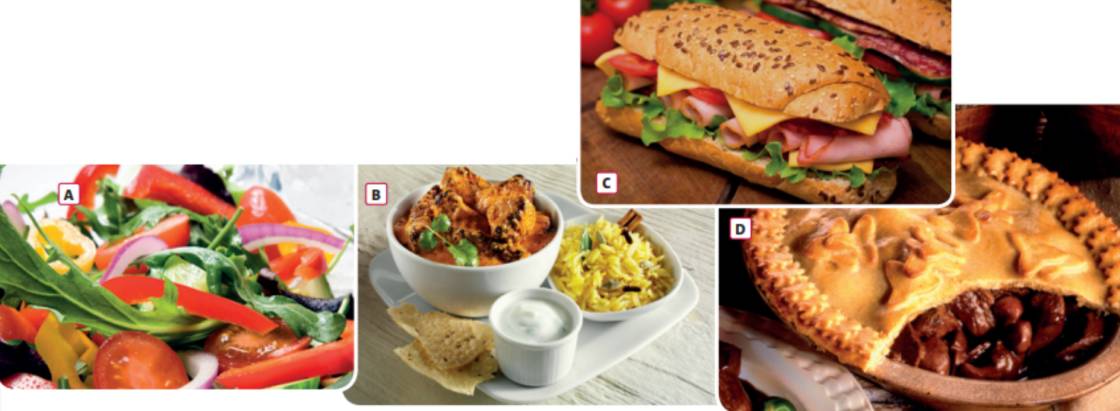Hãy nhập câu hỏi của bạn vào đây, nếu là tài khoản VIP, bạn sẽ được ưu tiên trả lời.

A. mansion (khu nhà lớn)
B. thatched cottage (nhà tranh lợp mái)
C. semi-detached house (nhà liền kề)
D. flat (căn hộ)
A: What type of home do you live in?
(Bạn sống trong loại nhà nào?)
B: I live in a detached house in district 10.
(Tôi sống trong một căn nhà biệt lập ở quận 10.)

A. salad | B. stew | C. banh mi | D. curry pie |
I like salad because it's good for our skin and suitable for losing weight. I don't like curry pie because I don't like that smell.

|
1Do you want me to do the washing-up?' 'No, it's all right. i'll do it.' 2 'I don't know how to use this computer.' 'OK, i'll help you.'
|

A: What do you usually do on weekends?
B: I often stay at home to recharge my battery after a long week of studying. On Sunday, I usually hang out with my friend at the coffee shop and go to the supermarket to buy some food for the next week.
A: How about this weekend? What are you doing?
B: On Saturday, I’m practicing playing badminton to prepare for the competition at my school.
A: And on Sunday?
B: Well, this Sunday, I'm going to the cinema at Vincom center to watch “Nha Ba Nu” movie with my family. It is a famous family movie. Would you like to come with us?
A: Yes, I’d love to
Tạm dịch:
A: Bạn thường làm gì vào cuối tuần?
B: Tôi thường ở nhà để nạp năng lượng sau một tuần dài học tập. vào Chủ nhật, tôi thường đi uống cà phê với bạn bè và đi siêu thị để mua một số thực phẩm cho tuần tới.
A: Còn cuối tuần này thì sao? Bạn sẽ làm gì thế?
B: Vào thứ Bảy, tôi dự định tập chơi cầu lông để chuẩn bị cho cuộc thi ở trường của tôi.
A: Và vào Chủ nhật?
B: À, chiều Chủ nhật này, tôi sẽ đến rạp chiếu phim ở trung tâm Vincom để xem phim “Nhà Bà Nữ” với gia đình. Đó là một bộ phim gia đình nổi tiếng. Bạn muốn đi cùng chúng tôi không?
A: Vâng, tôi rất thích.

Location: (Vị trí)
- Ask for advice on neighborhoods that are safe and convenient for commuting to school.
(Xin lời khuyên về những khu vực lân cận an toàn và thuận tiện cho việc đi lại đến trường.)
- Find out what transportation options are available in the area.
(Tìm hiểu những phương tiện giao thông có sẵn trong khu vực.)
Meals: (Các bữa ăn)
- Ask for recommendations on affordable restaurants or cafes nearby.
(Yêu cầu đề xuất về các nhà hàng hoặc quán cà phê giá cả phải chăng gần đó.)
- Inquire about access to a kitchen to cook meals.
(Hỏi về việc sử dụng nhà bếp để nấu các bữa ăn.)
Cost: (Chi phí)
- Ask for advice on how to save money on housing, such as finding a roommate or living in a less expensive area.
(Xin lời khuyên về cách tiết kiệm tiền nhà, chẳng hạn như tìm bạn cùng phòng hoặc sống ở khu vực ít tốn kém hơn.)
- Consider additional expenses such as utilities and transportation.
(Xem xét các chi phí bổ sung như tiện ích và đi lại.)
Sharing with other students:
(Chia sẻ với các học viên khác)
- Consider the benefits and drawbacks of living with roommates, such as splitting the cost of rent but potentially having less privacy.
(Xem xét những lợi ích và hạn chế của việc sống với bạn cùng phòng, chẳng hạn như chia sẻ chi phí thuê nhà nhưng có khả năng có ít quyền riêng tư hơn.)
- Look for resources such as roommate finding websites to help you find a compatible roommate.
(Tìm kiếm các nguồn như trang web tìm bạn cùng phòng để giúp bạn tìm được bạn cùng phòng tương thích.)


1 Where is Wat Arun located?
(Chùa Arun nằm ở đâu?)
2 Why is Wat Arun called the 'Temple of Dawn'?
(Tại sao Wat Arun được gọi là 'Ngôi đền Bình minh'?)
3 What can be filled in bread to make difference to banh mi?
(Có thể cho nhân gì vào bánh mì để tạo sự khác biệt cho bánh mì?)
4 Why are vegetables added to banh mi?
(Tại sao rau được thêm vào bánh mì?)
5 When are the buses packed with passengers?
(Khi nào xe buýt chật cứng hành khách?)
6 Which opportunities can be offered to the man's family?
(Những cơ hội nào có thể được cung cấp cho gia đình của người đàn ông?)

![]()
LEARN THIS! The third conditional
a We form the third conditional with if + past perfect, would have + past participle.
If I had seen her, I would have offered her a lift.
b We use the third conditional to talk about imaginary situations and to say how things could have been different in the past.
If you hadn't gone by taxi, you 1 wouldn’t have arrived (not arrive) on time.
c We often use it to express regret or criticism.
If you 2 had left (leave) earlier, you 3 wouldn’t have been (not be) late!

| nuclear family | generation gap |
| hairstyle | school children |
| junk food |
1 . why is there a ..............generation gap.................between parents and children ?
2 . Why are soft drinks and ..........junk food..................not good for our health ?
3 . Do you think .......school children......should wear uniforms ?
4 . Is the .........nuclear family.............the perfect type of family ?
5 . Have your parents ever complained about your ...............hairstyle.................?
Ex 4 : Fill in each blank with the given work
| nuclear family | generation gap |
| hairstyle | school children |
| junk food |
1 . why is there a ................generation gap...............between parents and children ?
2 . Why are soft drinks and ..................junk food..........not good for our health ?
3 . Do you think .......school children......should wear uniforms ?
4 . Is the .............nuclear family.........the perfect type of family ?
5 . Have your parents ever complained about your .................hairstyle ...............?

A. play bowling: chơi bowling
B. play chess: chơi cờ
C. make video blog: làm video blog
D. go camping: đi cắm trại
E. play musical instrument: chơi nhạc cụ
F. read books: đọc sách




1.a
2.b
3.d
4.c
5.e